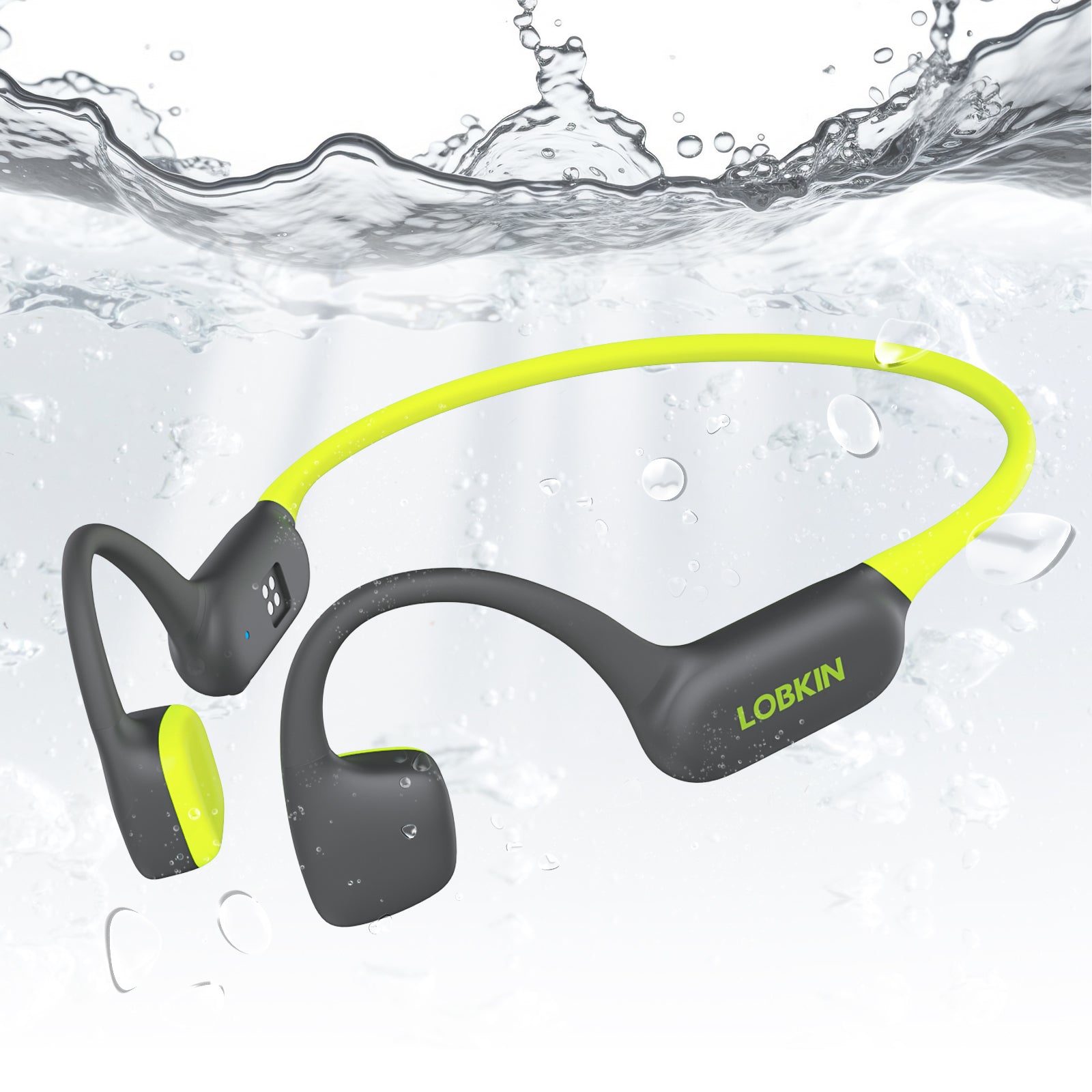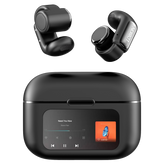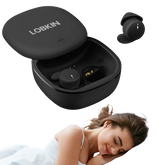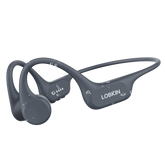Headphone Sound Quality: Tips to Get the Best Audio Experience
Introduction
You have invested in quality headphones, but are you getting the best possible sound from them? Many people do not realize that headphone sound quality depends on much more than just the hardware. From audio source quality to EQ settings, proper fit to file formats, numerous factors affect what you hear.
In this comprehensive guide, we will show you how to optimize every aspect of your audio setup to achieve the best possible sound quality from your headphones.
Understanding Sound Quality Basics
What Makes Good Sound Quality?
- Clarity: Distinct separation of instruments and vocals
- Balance: Proper mix of bass, mids, and treble
- Detail: Ability to hear subtle nuances
- Soundstage: Sense of space and positioning
- Dynamics: Range between quiet and loud sounds
Common Sound Quality Issues
- Muddy or unclear bass
- Harsh or piercing treble
- Muffled vocals
- Lack of detail
- Distortion at high volumes
- Imbalanced left-right channels
Tip 1: Choose High-Quality Audio Sources
Streaming Quality Settings
Spotify:
- Free: Up to 160 kbps (avoid for best quality)
- Premium: Up to 320 kbps (Very High quality setting)
- Enable High Quality Streaming in settings
Apple Music:
- Standard: 256 kbps AAC
- Lossless: Up to 24-bit/192 kHz
- Enable Lossless Audio in settings
Tidal:
- HiFi: 1411 kbps (CD quality)
- Master: Up to 9216 kbps (MQA)
- Best for audiophiles
YouTube Music:
- Normal: 128 kbps
- High: 256 kbps
- Always use High quality setting
File Format Quality Hierarchy
- FLAC/ALAC: Lossless, best quality
- WAV/AIFF: Uncompressed, excellent quality
- 320 kbps MP3: High quality, good compromise
- 256 kbps AAC: Good quality, efficient
- 128 kbps MP3: Acceptable, noticeable compression
- Below 128 kbps: Avoid for quality listening
Recommendation: Use at least 256 kbps for casual listening, 320 kbps or lossless for critical listening.
Tip 2: Optimize Your Device Settings
iPhone/iPad Settings
- Go to Settings > Music
- Enable Lossless Audio
- Turn off Sound Check (can reduce dynamics)
- Disable EQ unless specifically needed
- Set volume limit to safe levels
Android Settings
- Enable Developer Options
- Set Bluetooth Audio Codec to LDAC or aptX HD
- Disable absolute volume if experiencing issues
- Turn off audio effects unless desired
- Use high-quality streaming in music apps
Computer Settings
Windows:
- Disable audio enhancements
- Set sample rate to 24-bit/48kHz or higher
- Use WASAPI or ASIO for best quality
- Disable loudness equalization
Mac:
- Use Audio MIDI Setup for configuration
- Set format to 24-bit/96kHz
- Disable sound effects
- Use lossless audio when possible
Tip 3: Master EQ Settings
Understanding EQ Bands
- Sub-bass (20-60 Hz): Deep rumble, felt more than heard
- Bass (60-250 Hz): Punch and warmth
- Low-mids (250-500 Hz): Body and fullness
- Mids (500-2kHz): Vocals and most instruments
- Upper-mids (2-4kHz): Presence and clarity
- Treble (4-8kHz): Brightness and detail
- Air (8-20kHz): Sparkle and space
EQ Presets for Different Genres
Rock/Metal:
- Boost: 60Hz (+3dB), 1kHz (+2dB), 8kHz (+2dB)
- Cut: 250Hz (-2dB)
- Emphasizes guitars and drums
Hip-Hop/EDM:
- Boost: 40Hz (+4dB), 60Hz (+3dB), 12kHz (+2dB)
- Cut: 500Hz (-1dB)
- Enhances bass and high-end clarity
Classical/Jazz:
- Flat or slight boost: 2kHz (+1dB), 8kHz (+1dB)
- Natural, uncolored sound
- Preserves instrument timbre
Podcasts/Audiobooks:
- Boost: 1-3kHz (+3dB)
- Cut: Below 100Hz (-3dB), Above 8kHz (-2dB)
- Enhances voice clarity
Custom EQ Tips
- Start with flat EQ, adjust gradually
- Make small changes (1-2dB at a time)
- Cut frequencies rather than boost when possible
- Use wide Q values for gentle adjustments
- A/B test with EQ on and off
- Save presets for different music types
Tip 4: Ensure Proper Fit and Positioning
In-Ear Headphones
Ear Tip Selection:
- Try all included sizes
- Proper seal is crucial for bass
- Should feel secure but not painful
- Consider foam tips for better seal
Insertion Technique:
- Pull ear up and back slightly
- Insert at slight angle
- Twist gently to seal
- Should feel secure and comfortable
Over-Ear Headphones
- Ear cups should fully encompass ears
- Headband centered on top of head
- Even pressure on both sides
- No gaps between pads and head
Bone Conduction Headphones
LOBKIN X10/X25 Positioning:
- Transducers on cheekbones, just in front of ears
- Snug but comfortable fit
- Even contact on both sides
- Adjust band for optimal pressure
Sound Quality Tips:
- Proper placement is critical
- Experiment with slight position changes
- Tighter fit generally improves bass
- Clean transducers regularly
Tip 5: Optimize Volume Levels
The Sweet Spot
- 60-70% of maximum volume is ideal
- Should hear all details without strain
- Able to hear someone speaking nearby
- No distortion or harshness
Volume and Sound Quality
Too Low:
- Miss subtle details
- Reduced dynamic range
- Lack of impact
Too High:
- Distortion and clipping
- Hearing damage risk
- Reduced clarity
- Battery drain (wireless)
Safe Listening Guidelines
- Follow 60/60 rule: 60% volume for 60 minutes max
- Take 5-minute breaks every hour
- Lower volume in quiet environments
- Use volume limiting for kids (85dB max)
LOBKIN Kids Headphones: S16, S31, S33 feature built-in 85dB volume limiting for safe listening.
Tip 6: Maintain Your Headphones
Regular Cleaning
Daily:
- Wipe down with dry cloth
- Remove visible debris
- Check for damage
Weekly:
- Clean ear tips/pads with mild soap
- Disinfect contact surfaces
- Check cables and connections
Storage Best Practices
- Store in case when not in use
- Avoid extreme temperatures
- Keep away from moisture
- Don't wrap cable too tightly
- Store in cool, dry place
Cable Care (Wired Models)
- Avoid sharp bends
- Don't pull by cable
- Use cable management
- Check for fraying regularly
Tip 7: Use Quality Cables and Adapters
For Wired Headphones
- Use shielded cables to reduce interference
- Shorter cables often sound better
- Gold-plated connectors resist corrosion
- Avoid cheap adapters
For Wireless Headphones
Bluetooth Codecs (Best to Worst):
- LDAC: Up to 990 kbps, best quality
- aptX HD: 576 kbps, excellent quality
- aptX: 352 kbps, good quality
- AAC: 256 kbps, good for Apple devices
- SBC: 328 kbps, basic quality
LOBKIN Bluetooth: Our X10, X25, and newer models use Bluetooth 5.3/5.4 for stable, high-quality wireless audio.
Tip 8: Burn-In Your Headphones (Optional)
What is Burn-In?
Playing audio through new headphones for 40-100 hours to allow drivers to settle. Results are debated, but many users report subtle improvements.
How to Burn-In
- Play pink noise or music at moderate volume
- Run for 40-100 hours continuously
- Use varied content (different frequencies)
- Don't play at maximum volume
Note: Scientific evidence is limited, but it won't harm your headphones.
Tip 9: Consider Your Listening Environment
Noise Isolation vs. Open Design
Closed-Back/In-Ear:
- Better for noisy environments
- Improved bass response
- More intimate sound
- Blocks external noise
Open-Back/Bone Conduction:
- More natural sound
- Better for quiet environments
- Wider soundstage
- Situational awareness
Environmental Factors
- Quiet room = lower volume needed = better quality
- Reduce background noise when possible
- Avoid windy conditions for calls
- Temperature affects battery and performance
Tip 10: Match Headphones to Content
Music Genres
Bass-Heavy (Hip-Hop, EDM):
- Closed-back or in-ear
- Strong bass response
- Good seal essential
Classical, Jazz:
- Neutral sound signature
- Wide soundstage
- Detailed mids and highs
Rock, Pop:
- Balanced sound
- Good vocal clarity
- Energetic presentation
Other Content
Podcasts/Audiobooks:
- Clear mid-range
- Comfortable for long sessions
- Noise isolation helpful
Gaming:
- Good soundstage for positioning
- Clear communication
- Comfortable for hours
Exercise:
- Secure fit (bone conduction ideal)
- Sweat resistance
- Situational awareness
Product-Specific Sound Quality Tips
LOBKIN Bone Conduction (X10, X25)
- Ensure proper cheekbone placement
- Tighter fit improves bass
- X25 has enhanced bass technology
- Best for podcasts and active listening
- Clean transducers for optimal sound
LOBKIN Swimming Headphones (X18, X21)
- Use built-in MP3 mode for best quality
- Bluetooth quality reduced underwater
- Ensure proper seal for bass
- Store high-quality files on device
LOBKIN Kids Headphones (S16, S31, S33)
- 85dB limiting maintains quality safely
- Adjust fit for proper seal
- Disable LED lights for slightly better battery/performance
- Use wired mode when available for best quality
Troubleshooting Common Sound Issues
Weak Bass
Solutions:
- Check ear tip seal (in-ear models)
- Try larger ear tips
- Adjust EQ to boost low frequencies
- Ensure proper fit
- Check audio source quality
Harsh Treble
Solutions:
- Lower volume
- Reduce treble in EQ
- Check audio source (poor quality files sound harsh)
- Ensure proper fit (too loose can emphasize highs)
Muffled Sound
Solutions:
- Clean speaker mesh/transducers
- Check for debris in ear tips
- Increase treble slightly in EQ
- Verify audio source quality
- Check Bluetooth codec
Imbalanced Channels
Solutions:
- Check balance settings on device
- Clean headphone jacks/ports
- Test with different audio source
- Check for physical damage
Conclusion
Getting the best sound quality from your headphones is about optimization at every level: from choosing high-quality audio sources and proper file formats, to mastering EQ settings and ensuring perfect fit, to maintaining your headphones and matching them to your content.
By implementing these 10 tips, you can dramatically improve your listening experience without spending a cent on new equipment. Whether you are using LOBKIN bone conduction headphones for running, swimming headphones for pool workouts, or kids headphones for safe listening, these principles apply universally.
Remember, the best sound quality is the one that sounds best to you. Use these tips as a starting point, then adjust based on your personal preferences and listening habits. Your ears are unique, and your perfect sound signature might be different from someone else's.
Start optimizing your audio experience today and rediscover your favorite music with clarity and detail you have never heard before!







